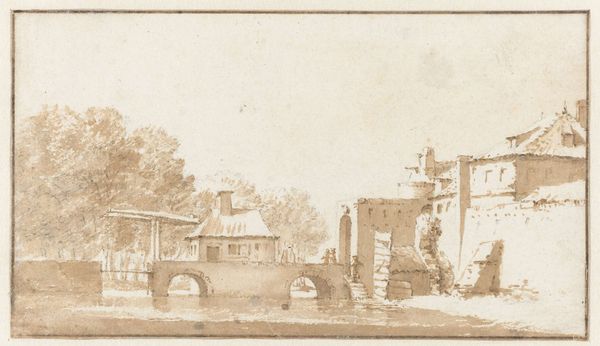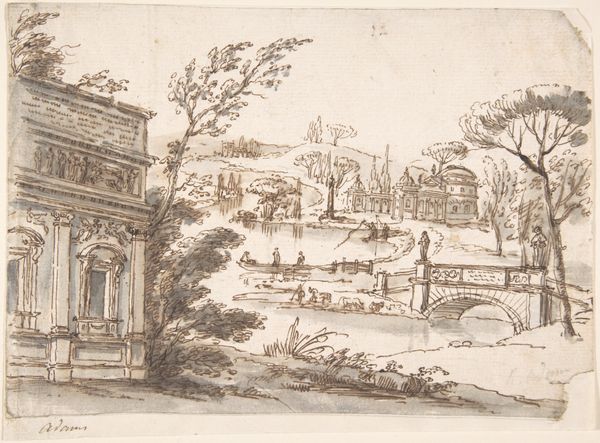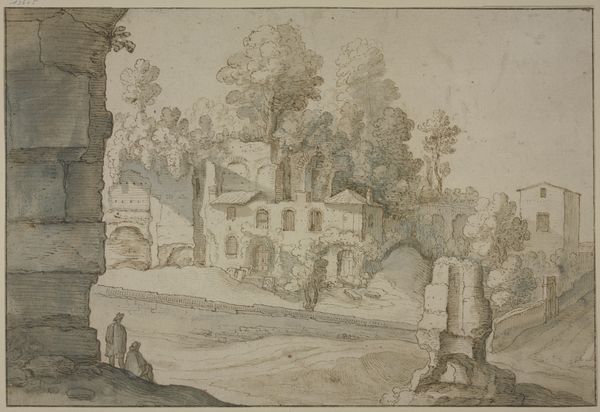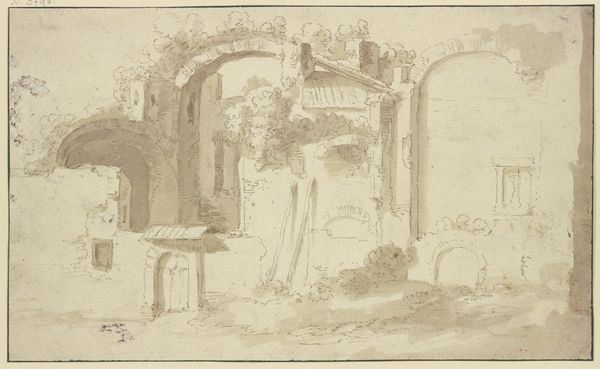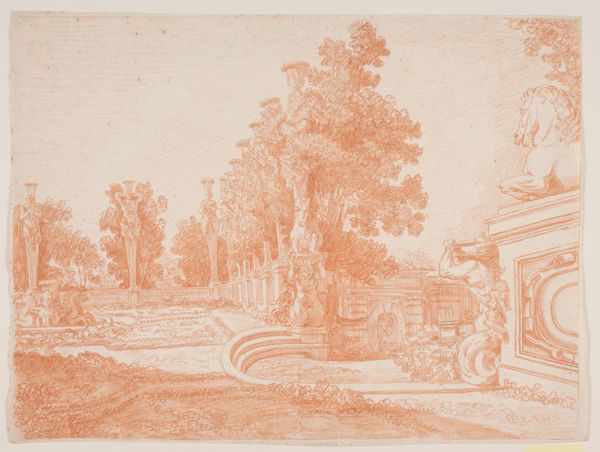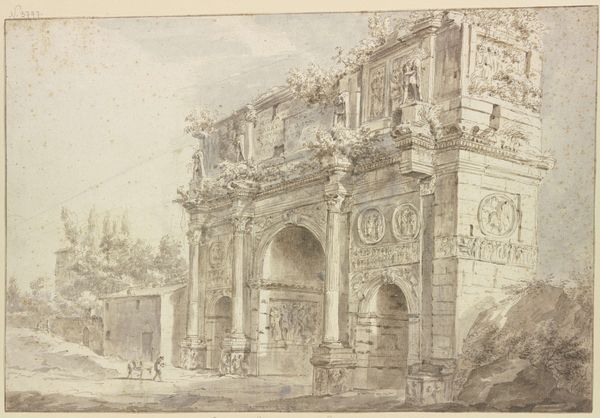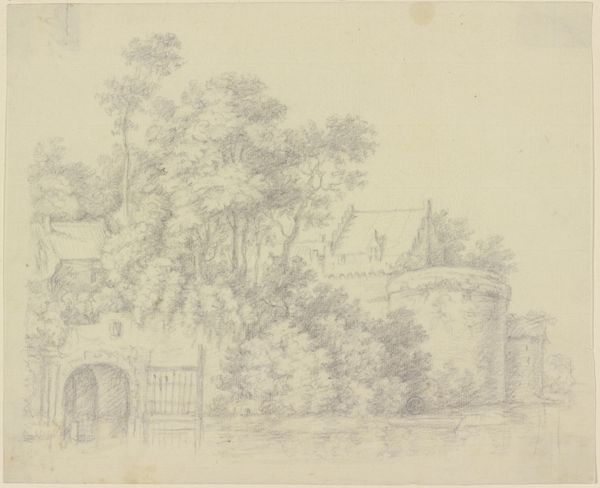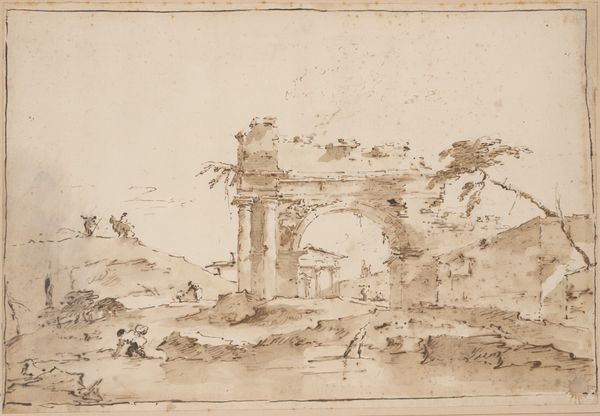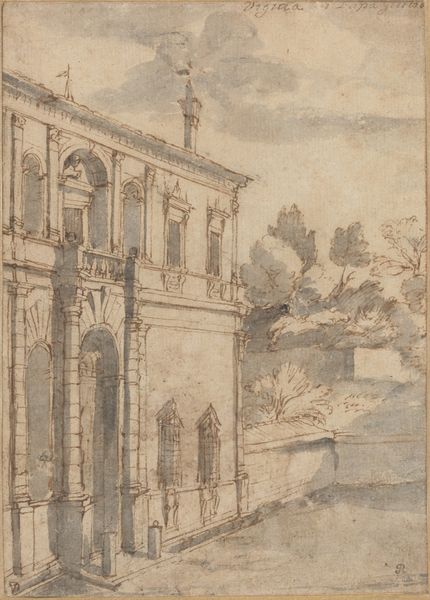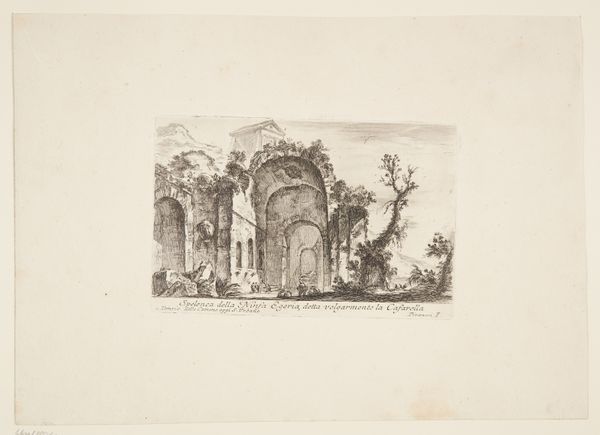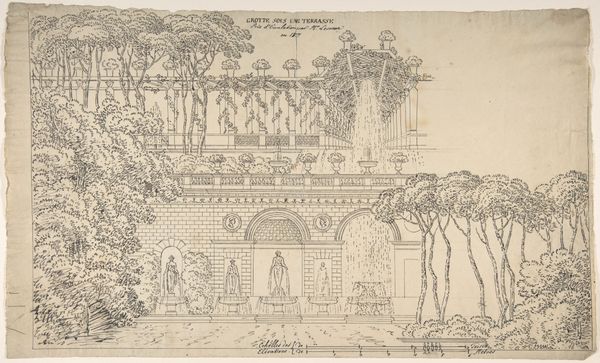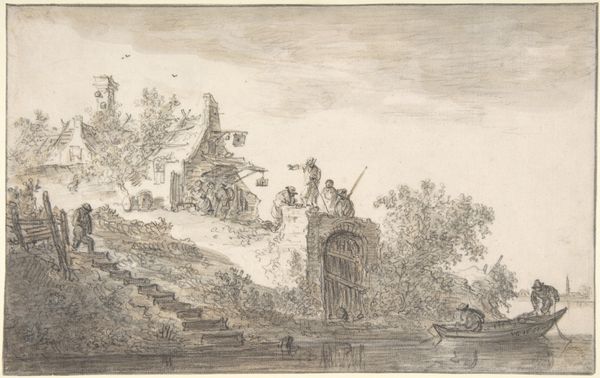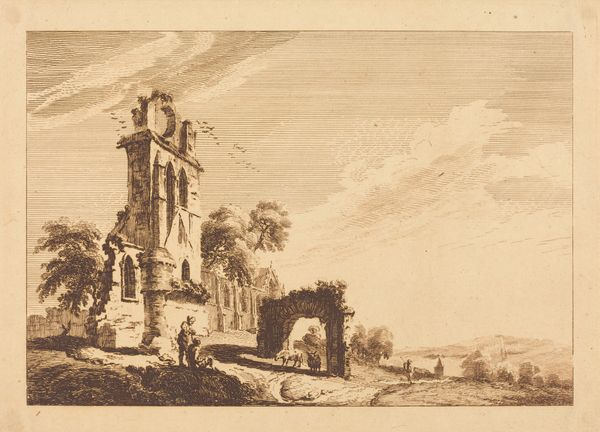
Venetian Capriccio: Landscape with a Farm Building, Sarcophagus, and Fountain (recto); Monument (verso) 1770 - 1844
0:00
0:00
drawing, watercolor, pencil
#
drawing
#
landscape
#
etching
#
watercolor
#
romanticism
#
pencil
#
cityscape
#
watercolor
Dimensions: sheet: 6 5/8 x 9 7/16 in. (16.9 x 24 cm)
Copyright: Public Domain
Editor: Here we have Giuseppe Bernardino Bison's "Venetian Capriccio: Landscape with a Farm Building, Sarcophagus, and Fountain," created between 1770 and 1844, using pencil, watercolor and etching. I am struck by its somber tone, despite depicting a seemingly idyllic landscape with a grand fountain. What draws your eye in this piece? Curator: What first captures my attention is the curious combination of life and death, isn't it? The vibrant fountain, a symbol of life and renewal, juxtaposed with the sarcophagus… a potent reminder of mortality. Bison plays with these opposing forces. And look at the faces, these masks on the fountain's basin. Consider what is ‘masked’ or being revealed, or even satirized? Editor: So the image carries contrasting symbols? Is that what gives it a disquieting feeling? Curator: Precisely. Think about what a 'capriccio' is, it is an artistic fantasy. He has assembled symbols to evoke reflections on time, memory and maybe even the inevitable decay of grand civilizations. Bison has created a fictional past but what are the collective associations in his image of ruins and nature merging? Editor: So, he's using the familiar, like fountains and landscapes, to hint at larger ideas through combined symbolism? Curator: Exactly! This tension between beauty and decay, between real and imagined space, charges the image. Bison has planted meaning in every corner, every shadow of the capriccio. Do you find that there are narratives being evoked, inviting you to remember your history? Editor: Definitely! The imagery encourages reflection and a sense of romantic melancholy for the passing of time. Curator: The emotional power of symbolic language is not a relic of the past! Considering our collective cultural memory and association, the image asks us about where our civilization is headed, no? I suppose Bison's layering of symbols prompts us to weave narratives around both life and loss. Editor: I never considered how historical symbols could be woven into artworks to explore timeless concerns. Thanks for the illuminating perspective.
Comments
No comments
Be the first to comment and join the conversation on the ultimate creative platform.
